How to Record System Audio on Mac in 4 Powerful Methods
When you need to record system audio on Mac, you will find that the built-in QuickTime tool only supports recording the microphone audio. You might also come across various audio recorders that are not entirely compatible with Mac, so you can read this article with detailed steps on how to record system audio on Mac with a successful attempt.
Guide List
The Easiest Way to Record System Audio on Mac [with Microphone and Webcam] How to Record System Audio on Mac through QuickTime and SoundFlower 3 More Audio Captures to Record System Audio on Mac FAQs about Recording System Audio on MacThe Easiest Way to Record System Audio on Mac [with Microphone and Webcam]
Have a try on the popular AnyRec Screen Recorder to record system audio on Mac. It is a highly recommended tool by professionals as it provides all the recording concerns you have. With its Audio Recorder function, you can successfully record system audio on Mac without worries. Amplify the recorded audio by going to the Preferences menu to change the audio format, quality, and hotkeys.
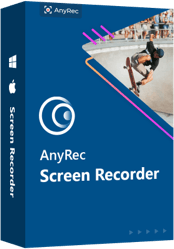
Record system audio on Mac easily for meetings, calls, and voice recordings.
Advanced settings to change output settings like format, resolution, folder path, etc.
Provide system sound and microphone volume levels with sound check features.
Able to clip the extra parts of the audio recordings before saving.
100% Secure
100% Secure
How to record system audio on Mac with AnyRec Screen Recorder:
Step 1.Download the tool on your device. You can freely download it from the official website. Once you have installed the software, click the "Audio Recorder" button on the main interface to record system audio on Mac.

Step 2.If you want to record your voice, ensure that your microphone is ready for the recording. Click the "System Sound" and "Microphone" buttons. Do a soundcheck from the "Preferences" menu.

Step 3.Click the "REC" button to start recording system audio on Mac. A small widget menu will appear on your screen. It allows you to adjust the volume level for system sound and microphone. You can also set the time to finish the recording.

Step 4.When you want to end the recording, click the "Stop" button or press the "Ctrl", "Alt", and "R" hotkeys. You can also trim the audio on the next window, and then click the "Save" button.
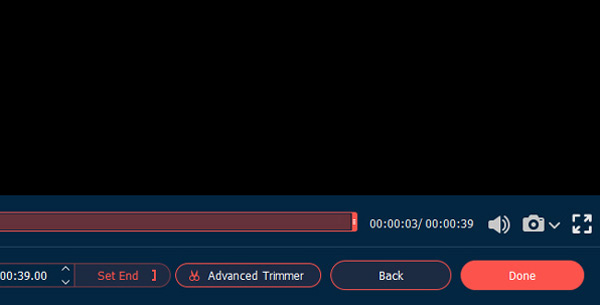
How to Record System Audio on Mac through QuickTime and SoundFlower
Although QuickTime is mainly a media player that opens and plays Apple formatted files, you can use it to record computer audio on Mac with the help of SoundFlower. Even though it does not offer much audio editing, SoundFlower is a simple yet effective add-on for recording. You can try the instruction below on how to capture system audio on Mac.
Step 1.Download and install the needed tool for recording system audio on Mac. If you have a newer version of Mac, change the permissions on the "System Preferences" tab before installing SoundFlower. Click the "Allow" button when you see a message saying unrecognized developer Matt Ingalls.

Step 2.Change the audio output by launching the "System Preferences" settings, then click the "Sound" button. Locate and click the "Output" button and pull up the list of available output devices. When you see the SoundFlower 64 ch and 2 ch from the list, click the "2 ch" button for a beginner’s test.
Step 3.Open the QuickTime software, then change the settings from the File menu. In the newly opened menu, click the "New Screen Recording" button. Click the "Options" button, then set the Microphone to SoundFlower (2 ch). Click the "Record" button to begin recording system audio on Mac.
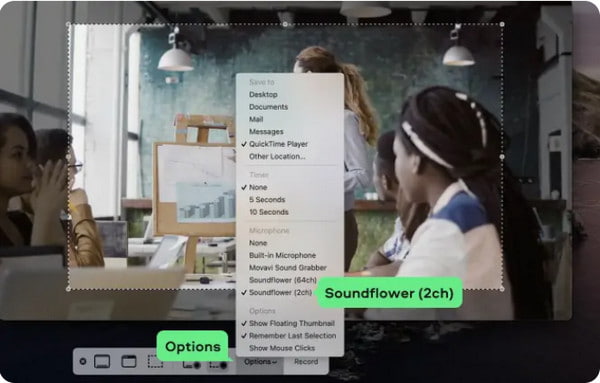
2 More Audio Captures to Record System Audio on Mac
If you don’t like the outcome of using QuickTime Screen Recorder and SoundFlower in capturing system audio on Mac, there are 2 more third-party apps to achieve recording system audio on Mac. This part will show you the best-recommended tools to help you effectively capture system audio on your Mac.
1. OBS Studio
Recording video is not the only feature OBS Studio is good at. As it is praised by many professional vloggers, gamers, and filmmakers, OBS Studio has the power to record system audio on Mac effortlessly. The excellent part of this tool is it’s free to utilize, and you can even configure its settings because OBS is an open-source app. The only downside of OBS Studio is its interface does not welcome amateurs to use it. But don’t worry; to get those high-quality recordings on the internal audio on Mac, follow the steps below.
How to record system audio on Mac using OBS Studio:
Step 1.Once you have launched OBS, click the "Add" button under the "Scene" menu. Rename it, then click the "OK" button. After that, click the "Add" button under the "Sources" tab to pull up the list. Click the "Audio Output Capture" button, and you should also move the parameters under the "Audio Mixer" button after choosing a Source.

Step 2.Click the "Start Recording" button under the Controls menu. If you wish to stop recording the system audio on Mac, you need to click the "Stop Recording" button on the Control Menu.
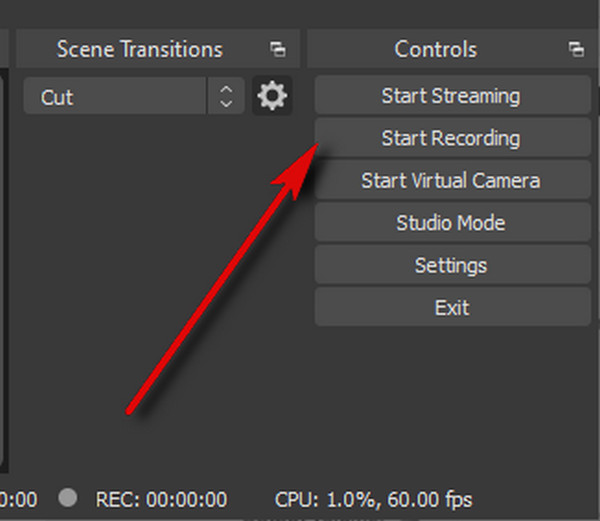
2. Screenflick
Screenflick is one of the most trusted audio recorder apps for recording system audio on Mac. By default, it supports internal audio recording, so you don’t have to download add-ons like SoundFlower. It is a beginner-friendly app so that anyone can navigate it. What’s more, it still does offer advanced settings and options for professional users. However, you can’t separately record system audio from video on Mac.
How to record system audio on Mac using Screenflick:
Step 1.Download and install the tool to your device. You can directly download it from the official website. Launch the app to start recording system audio on Mac. Then, go to the "Recording Settings" menu. Ensure that the "Record System Audio" option is toggled on.
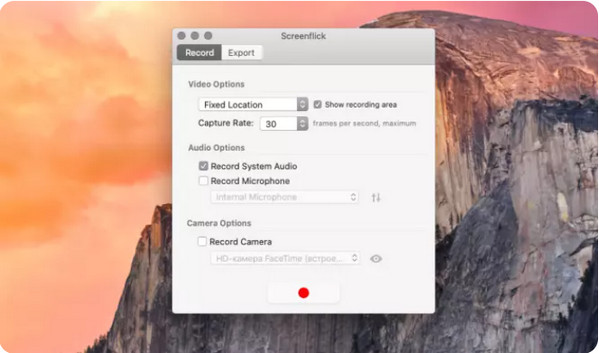
Step 2.Set up other settings such as camera recording and microphone if necessary. Choose the screen region you want to record or use a preset like the "Fullscreen" option.

Step 3.The tool will automatically record internal audio on Mac. You can pause or stop the recording by using the provided keyboard shortcuts. After recording, do some editing before saving it in MOV or MP4 format.
FAQs about Recording System Audio on Mac
-
How to record computer audio on Mac using Audacity?
You also need to install SoundFlower that allows Audacity to record system audio on Mac. Go to your Systems Preferences menu, then click the Sound icon to change the output device for SoundFlower. When the audio is rerouted, open the Audacity and choose other multi-output devices as the recording device for the system audio on Mac.
-
Can I record system audio on Mac with a microphone?
If you don’t want to configure complex tools like QuickTime and SoundFlower, AnyRec Screen Recorder is the best alternative you can easily use with high-quality audio output.
-
What are the most recommended audio mixers for recorded system audio on Mac?
To enhance and amplify the recorded system audio on Mac, you can try using OBS Studio, MP3 Audio Recorder, Audacity, and more. Some of these professional Mac screen recorders with audio also allow you to record internal and external audio on Mac and Android.
Conclusion
Now that you have learned the various ways to record computer audio on Mac, you can easily capture the best and most important events you have online. Try AnyRec Screen Recorder for more recording on your Mac, whether onscreen activities, ongoing gameplay, and other recording matter. Click the Free download button now!
100% Secure
100% Secure
